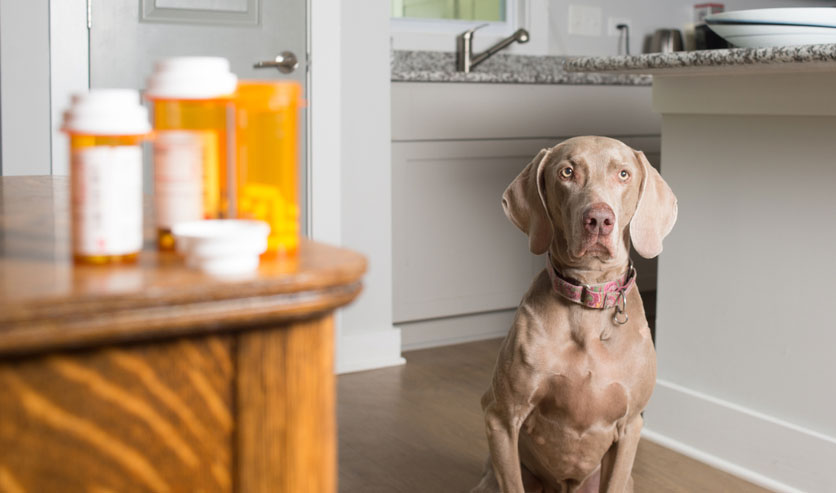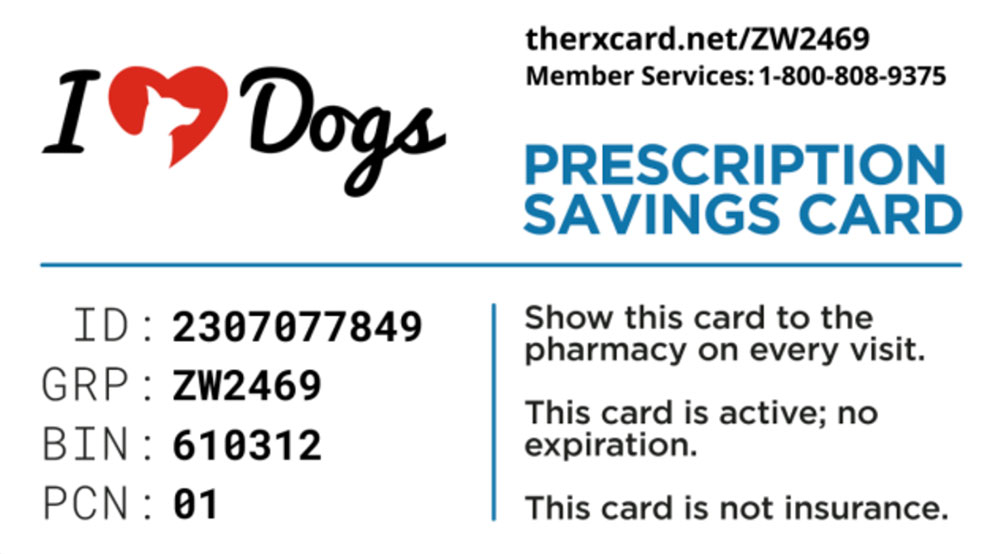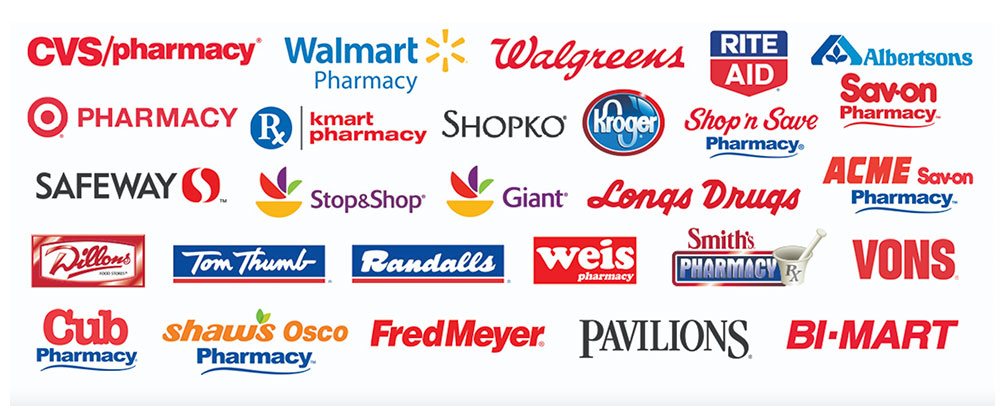Are you looking for a way to save your dog’s Fluoxetine prescription? Our Rx Discount Card for Pets can save you up to 80% of your pet’s Fluoxetine.
What Pharmacies Accept This Fluoxetine Coupon Card for Pets?
This card is accepted at over 60,000 participating pharmacies in the US, including:
How Much Will My Pet’s Fluoxetine Cost Using This Coupon?
In order to view a real-time pricing estimate, please use our pricing lookup tool here.
How Do Prescription Discount Cards for Pets Work? How Can It Help Me Save On My Dog’s Fluoxetine Prescription?
Pet prescription discount cards work similarly to prescription discount cards for humans. These cards offer significant savings on a variety of prescription medications. Here’s a general overview of how they work:
- Signing Up: Typically, you can sign up for a pet prescription discount card either online or via a physical sign-up process at participating pharmacies. The sign-up process is usually free, and you won’t need to provide personal health information.
- Receiving the Card: After sign-up, you’ll receive a card (either a physical one or a digital version) that includes your member ID.
- Using the Card: When filling a prescription for your pet, present the card at a participating pharmacy. The pharmacist will calculate the discount based on agreements between the pharmacy and the discount card provider.
- Discounts: The discount will be applied to the cost of the medication, and you’ll pay the remaining amount out-of-pocket. Discounts can range from a small percentage to up to 80% or more, depending on the medication and the terms of the card.
Regarding Fluoxetine for your dog, this is how a discount card can help:
Fluoxetine, a common antidepressant used in both humans and animals, is often used to treat behavioral problems in dogs, such as separation anxiety, aggression, and certain types of compulsive behavior. As it’s a commonly used drug, it’s likely included in the list of drugs covered by most pet prescription discount cards. When you present your discount card at the pharmacy, the cost of the Fluoxetine prescription may be significantly reduced. Remember, the actual amount saved can depend on the specific card, the pharmacy, and the cost of the medication itself.
Keep in mind that while prescription discount cards can offer significant savings, they may not always provide the lowest possible price. It’s a good idea to compare prices from different sources (such as different pharmacies or online retailers) to ensure you’re getting the best deal. Also, remember to consult with your vet about any changes to your pet’s medication regimen or sourcing.
What Are Some Common Reasons Fluoxetine is Prescribed for Dogs?

Fluoxetine, commonly known as Prozac, is an antidepressant that belongs to a class of drugs called selective serotonin reuptake inhibitors (SSRIs). This medication affects chemicals in the brain that may be unbalanced in people or pets with depression, panic, anxiety, or obsessive-compulsive symptoms.
In dogs, Fluoxetine is often prescribed for the following reasons:
- Behavioral Disorders: It’s primarily used to manage behavioral disorders in dogs, such as separation anxiety, aggression, and certain obsessive-compulsive behaviors.
- Separation Anxiety: In the case of separation anxiety, dogs may display behaviors such as destructiveness, inappropriate elimination, and excessive barking or howling when left alone. Fluoxetine can help to mitigate these behaviors.
- Aggression: Aggression in dogs can be toward other animals or humans, and it can occur for various reasons. Fluoxetine can help manage aggressive behaviors.
- Obsessive-Compulsive Behaviors: Some dogs exhibit obsessive-compulsive behaviors, such as tail-chasing, excessive licking, or pica (eating non-food items). Fluoxetine can help control these behaviors.
- Thunderstorm Phobia: Some dogs are prescribed fluoxetine for thunderstorm phobia, although this use is more off-label and not as common.
The prescription and administration of fluoxetine should be managed by a veterinarian, as the medication can have side effects and may not be suitable for all dogs, especially those with certain pre-existing health conditions or those on certain medications. Furthermore, like all behavior-modifying drugs, fluoxetine is most effective when used in conjunction with behavioral training techniques.
What Are Some Other Ways I Can Save Money on My Pet’s Fluoxetine Prescription?
Aside from using pet prescription discount cards, here are some additional ways you can save money on your dog’s fluoxetine prescription:
- Generic Drugs: Often, brand-name drugs are more expensive than their generic equivalents. In the case of fluoxetine, the brand-name version is Prozac. Asking your vet to prescribe the generic version can save you money.
- Price Comparisons: Different pharmacies may offer the same medication at different prices. Do some research and compare prices at different pharmacies in your area, or use online tools to compare prices at local and online pharmacies.
- Buy in Bulk: If your pet is on long-term medication, it might be cheaper to buy in bulk. Some pharmacies offer discounts for larger quantities. However, make sure the medication won’t expire before your pet can use it all.
- Online Pharmacies: Online pet pharmacies often offer competitive prices and could be less expensive than brick-and-mortar pharmacies. Just be sure to use a reputable source to ensure you’re getting the correct medication. Some well-known online pet pharmacies are 1-800-PetMeds, Chewy, and PetCareRx.
- Pharmaceutical Company Assistance: Some pharmaceutical companies have programs to help with the cost of medications. Check the manufacturer’s website to see if they offer any discount programs or coupons.
- Ask Your Vet: Your vet may have samples they can provide at a discounted price or free of charge. They might also know of local resources or programs that can help offset the cost of your pet’s medication.
Always remember that the safety and health of your pet should be a priority. Don’t change dosages or stop giving your pet their medication without consulting with your veterinarian first.


 Toledo, United States.
Toledo, United States.